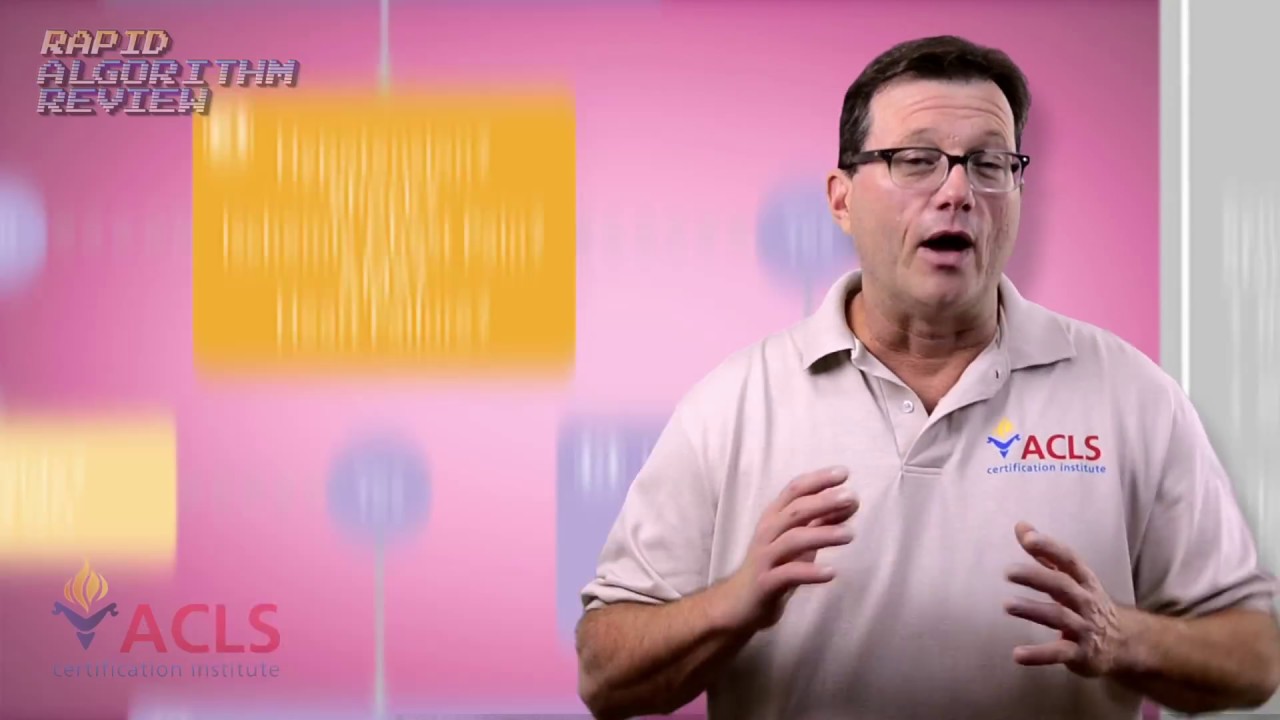Hi. I’m Mark from ACLS Certification Institute. Welcome back to Rapid Algorithm Review. Today, tachycardia.
Now I’ll get into tachycardia rhythm. The first thing we’re looking for is the heart rate. Remember, tachycardia is any rate over 100, but in the ACLS algorithm, we’re looking for heart rates and pulses above 150.
Next, why is this patient tachycardic? Try to find a cause for this tachycardia. Begin supportive care: Maintain their airway—do we need to provide them an airway, do we need to bag the patient? Supply oxygen to the patient if they’re hypoxic. Check and maintain their blood pressure. Get a 12-lead EKG. Start your supportive care.
Is this tachycardia causing shock, hypoperfusion, altered mental status, ischemic chest pain? If so, immediate synchronized cardioversion. Sedation would be okay as long as it didn’t hold up immediate synchronized cardioversion. Remember, unstable patient: electricity, synchronized cardioversion. Synchronized cardioversion for a regular narrow-complex tachycardia: 50 to 100 J. If it’s an irregular narrow-complex tachycardia, like an A-fib with a rapid ventricular response, you’re going to start your synchronized a little higher, maybe 120 to 200 J.
Assess is this tachycardia wide or narrow? Again, we’re looking at the width of the QRS. If it’s greater than 0.12 seconds, we call this a wide-complex tachycardia. If it’s equal or less than 0.12 seconds, it’s a narrow-complex tachycardia. For narrow-complex tachycardias, first drug up is adenosine 6 mg rapid IV push, followed by 20 cc syringe bolus of saline. We have to get that drug to the heart. We have to get it there quickly because the half-life of adenosine is only a few seconds. Remember, adenosine should only be used in regular rhythms, not any irregular tachycardias; but in regular tachycardias, adenosine would be appropriate. If adenosine doesn’t work, consider a calcium channel blocker and get an expert involved quickly. If this is a wide-complex tachycardia, our first drug up is amiodarone. Start an infusion of 150 mg over 10 minutes. Remember, stable tachycardias: drugs; unstable tachycardias: immediate synchronized cardioversion.
Rapid-fire review. First, heart rate over 150. Next, why are they tachycardic? Try to figure that out. Next, ABCs: airway (provide them an airway), oxygen, IV, monitor their oximetry, supportive care. Next, is the patient stable or unstable? If they’re unstable and shocky, immediate synchronized cardioversion. It doesn’t matter if it’s narrow or wide, immediate synchronized cardioversion. If they’re stable, is the complex wide or narrow? Narrow-complex, first drug up is adenosine 6 mg rapid IV push. Wide complex, amiodarone 150 mg over 10 minutes.
I’m Mark for ACLS Certification Institute. This has been Rapid Algorithm Review for tachycardia. I’ll see you in the next algorithm.
Recommended Articles

Shockable Rhythms: Ventricular Tachycardia, Ventricular Fibrillation, Supraventricular Tachycardia
According to television, if there’s a heart problem, you shock it, right? WRONG! Learn how to properly manage shockable rhythms.




